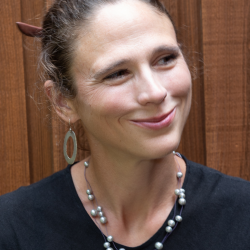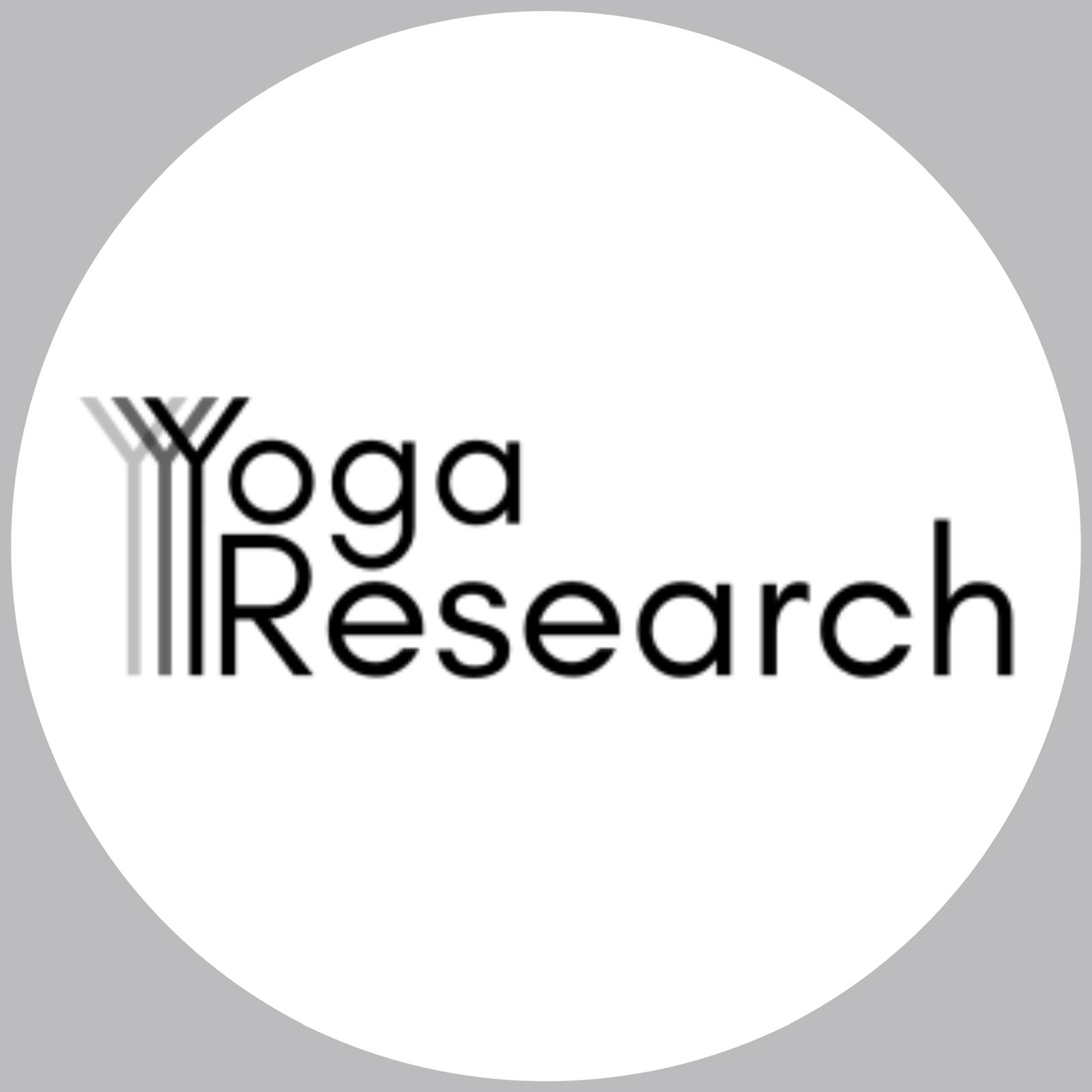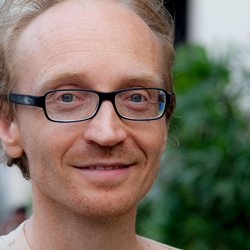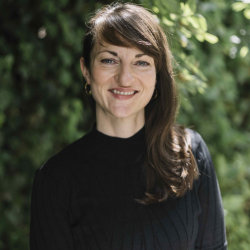
Aug 8
2025
9AM-12PM PDT
2025
9AM-12PM PDT
9:00 am - 9:20 am
“Building the Future of Yoga Research: Institutions, Collaboration, and Integration”
20 mins
Yoga has been a subject of academic research within various disciplines for some time, but as an interdisciplinary field of study, it is still in its early stages. The institutions supporting this growing community are just beginning to take shape. Among these are the Yoga Darśana, Yoga Sādhana conference series, which has held three in-person events in Kraków (2016 and 2022) and Hamburg (2024), with the next planned for Paris in 2026. The current online conference, Yoga Darśana, Yoga Sādhana at Arihanta Institute, marks the first virtual-only event.
Additionally, the website yogaresearch.org, evolving from modernyogaresearch.org, has become a hub for the community, hosting mailing lists and serving as a key platform for dialogue. The informal group managing its transition has played a pivotal role in this process. Another significant contribution to the field is the open-access Journal of Yoga Studies, founded in 2018, which has published five issues to date.
In this talk, I will share the histories and contributions of these institutions, discuss their current status, and explore opportunities for those wishing to be involved. A key focus will be their ongoing integration, particularly through the establishment of the Yoga Studies Research Network, a new academic society envisioned to serve as an institutional backbone with transparent, democratic structures and processes.
Read MoreRead LessAdditionally, the website yogaresearch.org, evolving from modernyogaresearch.org, has become a hub for the community, hosting mailing lists and serving as a key platform for dialogue. The informal group managing its transition has played a pivotal role in this process. Another significant contribution to the field is the open-access Journal of Yoga Studies, founded in 2018, which has published five issues to date.
In this talk, I will share the histories and contributions of these institutions, discuss their current status, and explore opportunities for those wishing to be involved. A key focus will be their ongoing integration, particularly through the establishment of the Yoga Studies Research Network, a new academic society envisioned to serve as an institutional backbone with transparent, democratic structures and processes.
How important is āsana in yoga practice?
Presiding:  Suzanne Newcombe
Suzanne Newcombe
 Suzanne Newcombe
Suzanne NewcombeĀsana is the central practice of the majority of contemporary yoga practitioners globally. Yet many contemporary practitioners are quick to emphasize their yoga practices as essentially spiritual. Questions remain about what continuity there is between pre-modern and contemporary āsana practices. Anxieties about having an authentic and respectful practice for contemporary practitioners often elicit questions about the meaning and purpose of āsana within historical yoga traditions. How does āsana practice - past and present - relate to mokṣa, kaivalya, or some kind of salvation that is ‘more than' being healthy in a physical body?
In this session we will explore the main characteristics of pre-modern yogāsana as well as the range of meanings contemporary practitioners give to their āsana-focused yoga practices. The session will focus on considering the meaning of āsana, and the diversity of interpretations of āsana, highlighting both continuities and changes to the yoga traditions over time and in different cultural contexts.
Read MoreRead LessIn this session we will explore the main characteristics of pre-modern yogāsana as well as the range of meanings contemporary practitioners give to their āsana-focused yoga practices. The session will focus on considering the meaning of āsana, and the diversity of interpretations of āsana, highlighting both continuities and changes to the yoga traditions over time and in different cultural contexts.
9:30 am - 9:50 am
“Premodern Yogāsana”
20 mins
At a time when sitting on the floor was commonplace and innumerable postures were known, several exponents of yoga elaborated on guidelines that define what makes a posture suitable for the practice of yoga. Using these guidelines as a starting point, this talk will attempt to identify salient themes in teachings on āsana across various Indian yoga traditions up to the 19th century. Examples of premodern postural practice from related cultures, such as Tibet, and other physical disciplines, such as wrestling, will be discussed as points of contrast and cross-pollination.
In seeking to identify universal qualities, methods or aims of āsana, this talk will broach broader questions: is there anything inherently special or unique about postural practice in yoga across time and traditions? If so, was it transmitted by the Indian gurus largely responsible for facilitating the spread of yoga worldwide?
Read MoreRead LessIn seeking to identify universal qualities, methods or aims of āsana, this talk will broach broader questions: is there anything inherently special or unique about postural practice in yoga across time and traditions? If so, was it transmitted by the Indian gurus largely responsible for facilitating the spread of yoga worldwide?
9:50 am - 10:10 am
“Modern āsana: A gateway to yoga?”
20 mins
The concept of āsana has been a part of yoga for almost two millennia, but wasn't until the last three centuries, i.e. the modern preriod, that āsana's importance in yoga practice grew. From the second half of the 20th century, a practice that focused on yogic postures lead to yoga’s unprecedented popularity across the globe.
Each year, countless new enthusiasts gain their first insight into yoga through postural practice. However, what starts with bending the body into weird shapes doesn't necessarily remain just that. For many practitioners, the experience of āsana practice becomes a gateway to exploring yoga in its many facets. Some discover in yoga a tool of self-exploration and transformation, others find with it a sense of community and various forms of social (dis)engagement. For some - including the growing community of scholar-practitioners - discovering āsana sparks interest in learning more about the history of yoga and its place in Indian – and transnational – culture.
Read MoreRead LessEach year, countless new enthusiasts gain their first insight into yoga through postural practice. However, what starts with bending the body into weird shapes doesn't necessarily remain just that. For many practitioners, the experience of āsana practice becomes a gateway to exploring yoga in its many facets. Some discover in yoga a tool of self-exploration and transformation, others find with it a sense of community and various forms of social (dis)engagement. For some - including the growing community of scholar-practitioners - discovering āsana sparks interest in learning more about the history of yoga and its place in Indian – and transnational – culture.
Which yoga texts should I be studying?
Presiding:  Samuel Horsley
Samuel Horsley
 Samuel Horsley
Samuel HorsleyWhat we know about the history of yoga, is largely shaped by textual sources. Of which the best known are Patañjali's Yoga Sūtras, the Haṭhapradīpikā, the Bhagavad Gītā, and the Upaniṣads. These texts offer insights into practices, methodologies, and belief systems. Yet, these texts, present notable challenges: their dating is often uncertain, authorship is frequently unknown, and the contexts of their compositions remain difficult to reconstruct. Furthermore, as prescriptive texts, they rarely provide information about actual practitioners, serving instead as a snapshot of specific historical moments. To complement textual sources, other forms of evidence—such as oral traditions, art historical materials, and archaeological findings—help us construct a more nuanced understanding of yoga's history. A broader variety of sources included into research over time, and the development of new methodologies continually reshape these interpretations.
The first European-language translations in the 19th century introduced these texts to broader audiences, including communities of practitioners. Yet these translations were also cultural reinterpretations, shaped by the methodologies and contexts of their translators. Concepts were often reinterpreted to align with European intellectual frameworks and cultural sensibilities.
Similarly, practitioners, often embedded within specific lineages or communities, adapted the texts and practices to suit their own goals and contexts, navigating the complex interplay between Indic belief systems and European cultural frameworks. This ongoing process of recontextualization has shaped not only how yoga is practiced but also how it is understood amongst practitioners and academics.
This panel explores the transformation of yoga texts into practice across time and cultural contexts. It examines how texts such as the Haṭhapradīpikā and the Yogasūtra have been interpreted in pre-WWII German academia and contemporary yoga teacher trainings in Germany, revealing how these interpretations shape the understanding of yoga philosophy and practice. By connecting historical academic approaches with empirical fieldwork, the panel sheds light on how texts are recontextualized, reinterpreted, and embodied to align with the goals, methodologies, and worldviews of different eras and communities.
Read MoreRead LessThe first European-language translations in the 19th century introduced these texts to broader audiences, including communities of practitioners. Yet these translations were also cultural reinterpretations, shaped by the methodologies and contexts of their translators. Concepts were often reinterpreted to align with European intellectual frameworks and cultural sensibilities.
Similarly, practitioners, often embedded within specific lineages or communities, adapted the texts and practices to suit their own goals and contexts, navigating the complex interplay between Indic belief systems and European cultural frameworks. This ongoing process of recontextualization has shaped not only how yoga is practiced but also how it is understood amongst practitioners and academics.
This panel explores the transformation of yoga texts into practice across time and cultural contexts. It examines how texts such as the Haṭhapradīpikā and the Yogasūtra have been interpreted in pre-WWII German academia and contemporary yoga teacher trainings in Germany, revealing how these interpretations shape the understanding of yoga philosophy and practice. By connecting historical academic approaches with empirical fieldwork, the panel sheds light on how texts are recontextualized, reinterpreted, and embodied to align with the goals, methodologies, and worldviews of different eras and communities.
10:40 am - 11:00 am
“From Text to Practice: Contrasting Perspectives on Haṭhayoga in Pre-WWII German Indology”
20 mins
In pre-WWII German academia, particularly within the field of Indology, Haṭhayoga was largely viewed as a practical and physical approach to yoga, focusing on āsana, prāṇāyāma, and mudrā.
This presentation examines two contrasting interpretations of Haṭhayoga practices within German Indology: Hermann Walter's approach as documented in his translation of the Haṭhapradīpikā (1893) and Schmidt’s perspective based on his book, fakirs and fakirism (1906) (Original: Fakire und Fakirtum). Walter referred to (a) ‘Western Sciences’, questioning possible health benefits of practices by referring to textbooks on medicine, and reinterpreted Indian concepts, such as states of mind as forms of hypnosis popular in psychology at the end of the 19 th Ce. Additionally, (b) he verified haṭhayogic practices within the inherent logic of the Indic belief system. For example, he viewed practices like āsana and prāṇāyāma which lead to a healthier body, as essential for achieving liberation. In contrast, he rejected the siddhis as inconsistent with the path to liberation.
In contrast, Schmidt’s interpretation, based on his translation of the Gheraṇḍa Saṃhitā and other sources such as traveler reports and observations of contemporary practioners, dismissed Haṭhayoga as fraudulent. Schmidt denied its significance in the broader context of the Indic belief system. This point of view, is to a certain point reflected in his description of hathayogic methodology. While he acknowledged that
some practices might have physical benefits and potential relevance for Western psychology (e.g., hypnosis), he questions and devalues most of the practices.
By comparing these interpretations, this presentation explores how academic traditions, socio-cultural contexts, and methodological approaches shaped the reception and analysis of Haṭhayoga in German academia. This comparison sheds light on the broader dynamics of interpreting primary sources and demonstrates how practices with similar physical elements were assigned vastly different purposes and meanings.
Read MoreRead LessThis presentation examines two contrasting interpretations of Haṭhayoga practices within German Indology: Hermann Walter's approach as documented in his translation of the Haṭhapradīpikā (1893) and Schmidt’s perspective based on his book, fakirs and fakirism (1906) (Original: Fakire und Fakirtum). Walter referred to (a) ‘Western Sciences’, questioning possible health benefits of practices by referring to textbooks on medicine, and reinterpreted Indian concepts, such as states of mind as forms of hypnosis popular in psychology at the end of the 19 th Ce. Additionally, (b) he verified haṭhayogic practices within the inherent logic of the Indic belief system. For example, he viewed practices like āsana and prāṇāyāma which lead to a healthier body, as essential for achieving liberation. In contrast, he rejected the siddhis as inconsistent with the path to liberation.
In contrast, Schmidt’s interpretation, based on his translation of the Gheraṇḍa Saṃhitā and other sources such as traveler reports and observations of contemporary practioners, dismissed Haṭhayoga as fraudulent. Schmidt denied its significance in the broader context of the Indic belief system. This point of view, is to a certain point reflected in his description of hathayogic methodology. While he acknowledged that
some practices might have physical benefits and potential relevance for Western psychology (e.g., hypnosis), he questions and devalues most of the practices.
By comparing these interpretations, this presentation explores how academic traditions, socio-cultural contexts, and methodological approaches shaped the reception and analysis of Haṭhayoga in German academia. This comparison sheds light on the broader dynamics of interpreting primary sources and demonstrates how practices with similar physical elements were assigned vastly different purposes and meanings.
11:00 am - 11:20 am
“Embodied Philosophy: Reinterpreting the Yogasūtra in Contemporary Yoga”
20 mins
This talk analyses contemporary yoga philosophy mainly from an empirical perspective. What is currently called yoga philosophy and taught in yoga teacher trainings is related to an ancient Indian text called Yogasūtra, but emerged in its modern manifestations in the early 20th century through cultural exchange between colonized India and the West. The analysis of the empirical data reveals six primary characteristics of contemporary yoga philosophy. One of them is its strong orientation towards practice, which has been perceived by former yoga research rather as a deviant development from the classical exegesis of the Yogasūtra and has not been studied systematically based on a recent case study. To address this task, the talk, which is based on von Ostrowski’s doctoral thesis, builds on empirical fieldwork in the philosophy classes of an advanced Ashtanga Yoga training in Germany. The talk argues that the embodied experiences generated by a modern physical yoga practice affect the textual exegesis and shows how, through cultural transfer, the Yogasūtra is transformed from a world-removed to a worldly and embodied text tailored to the everyday life of late modern recipients. The study draws on Ashtanga Yoga as one example to illustrate that what is called yoga philosophy today is influenced by, among other things, a modern, body-centered understanding of spirituality, topics of the mindfulness movement, results of meditation research, a New Age-related worldview as well as exoticism.
Read MoreRead Less_orig)


 Keynote Speaker: Peter Pasedach
Keynote Speaker: Peter Pasedach Panelist: Jason Birch
Panelist: Jason Birch Panelist: Matylda Ciołkosz
Panelist: Matylda Ciołkosz Panelist: Anja Nikodem
Panelist: Anja Nikodem Panelist: Laura von Ostrowski
Panelist: Laura von Ostrowski